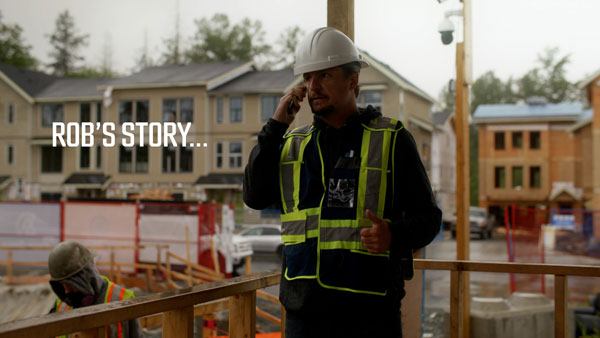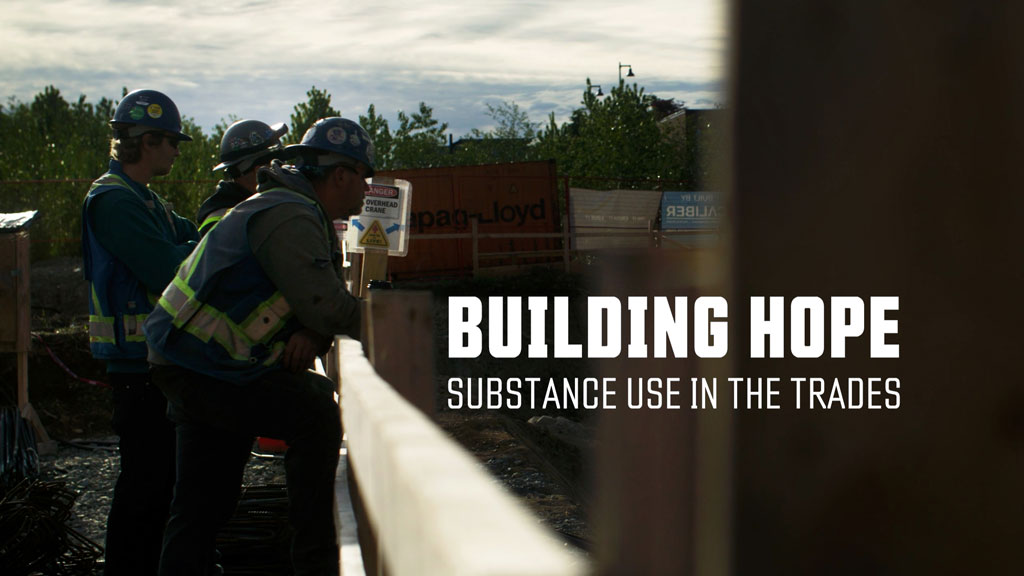Rob Tournour started his journey to addiction early in life.
He began drinking alcohol at age 15 and liked the way it made him feel.
“I quite enjoyed the feeling of intoxication, of drinking, and it became a big part of my life,” the masonry worker recalls.
In construction, he’d spend the day on the job and, immediately after putting down the tools, would head to the bar or the back of his pickup truck to get a cold one.
Eventually, the addiction took its toll. He also used drugs.
“I tried to carry out the con, if you will. I wanted people to know that I was in control, that I knew what I was doing, but it was a double life,” he says. “The Jekyll and the Hyde would come out and they would take me to the dark places and into situations that were very dangerous.
“The pattern that terrifies me now looking back is that I more often than not bought street drugs. I knew that I had a problem but I couldn’t find a way to ask for help. I’m so grateful that I finally did and there were people there that would listen and wanted to help.”
Tournour, now sober, tells his story in a nine-minute YouTube video called , that has been funded by Health şÚÁĎłÔąĎÍř, the Community Action Initiative in B.C., the City of White Rock, and Sources Community Resource Centres. Three other trades workers – Trevor Botkin, Kale Moth and Daniel Snyder – are also featured in the video.

Four shorter videos of the men were also produced.
The personal stories shared by the tradespeople in the videos are compelling. They speak candidly about their experiences using substances and offer information on how to stay safer in the drug-poisoning era.
The goal is to raise awareness about the crisis among men in the trades and construction, reduce the stigma toward people who use substances and promote seeking help. Men in the trades are at particular risk of experiencing substance use-related harms, including overdose.
Inspiration for the videos came from George Passmore, director of personal and family counselling and support at Sources Community Resources. Five years ago, he attended the funeral of an ironworker friend who’d had problems with substance abuse due to on-the-job injuries and died from an overdose.
He left behind a five-year-old son.
At the funeral, the deceased man’s friends – many of them in the trades – were visibly upset and expressed despair at the toll drugs were taking on their fellow workers.
For Passmore, it was a turning point. He decided to find a way to help those in the trades who are struggling.
“It’s a hard-to-reach group and I didn’t want to do something where we just go to different jobsites and try to have a talk,” he says. “I also knew that I wanted it to be from peer to peer. That’s much more powerful. I really wanted to ensure that we found people from within the trades.”
He rounded up funding and recruited the tradespeople to tell their stories. Some he knew through his work at Sources. Others were found by the funding groups.
Basetwo Media Inc., a video production agency in Vancouver, was chosen to produce the video. The Vancouver Island Construction Association has used the video in tailgate toolbox talks and Moms Stop The Harm, a network of Canadian families impacted by substance-use-related harms and deaths, has been sharing the video.
According to Health şÚÁĎłÔąĎÍř, men who work in the trades are more affected by overdoses and substance use because of the stressful, physically demanding work, and they must find ways to cope with pain. The stigma associated with drug and alcohol use can prevent people from asking for help because they do not want to damage their reputation, be judged or get into trouble professionally or with the law.
According to Passmore, workers most at risk are those who use drugs alone. He suggests anyone who uses drugs should download the Lifeguard app that was launched by the Provincial Health Services Authority. The app can be downloaded at both the and .
The app is activated by the user before they take their dose. After 50 seconds, the app will sound an alarm. If the user doesn’t hit a button to stop the alarm, indicating they are fine, the alarm grows louder. After 75 seconds a text-to-voice call will go straight to 911, alerting emergency medical dispatchers of a potential overdose.
Passmore says the intent of the videos is to do more than convey the message that drugs are dangerous.
“We know that people are going to use substances, but substance use contains unprecedented risk. The drug supply has changed. We want to, first and foremost, raise awareness about the elevated risk that exists now and that particularly people in the trades seem to be at higher risk for a number of reasons.”











Recent Comments
comments for this post are closed